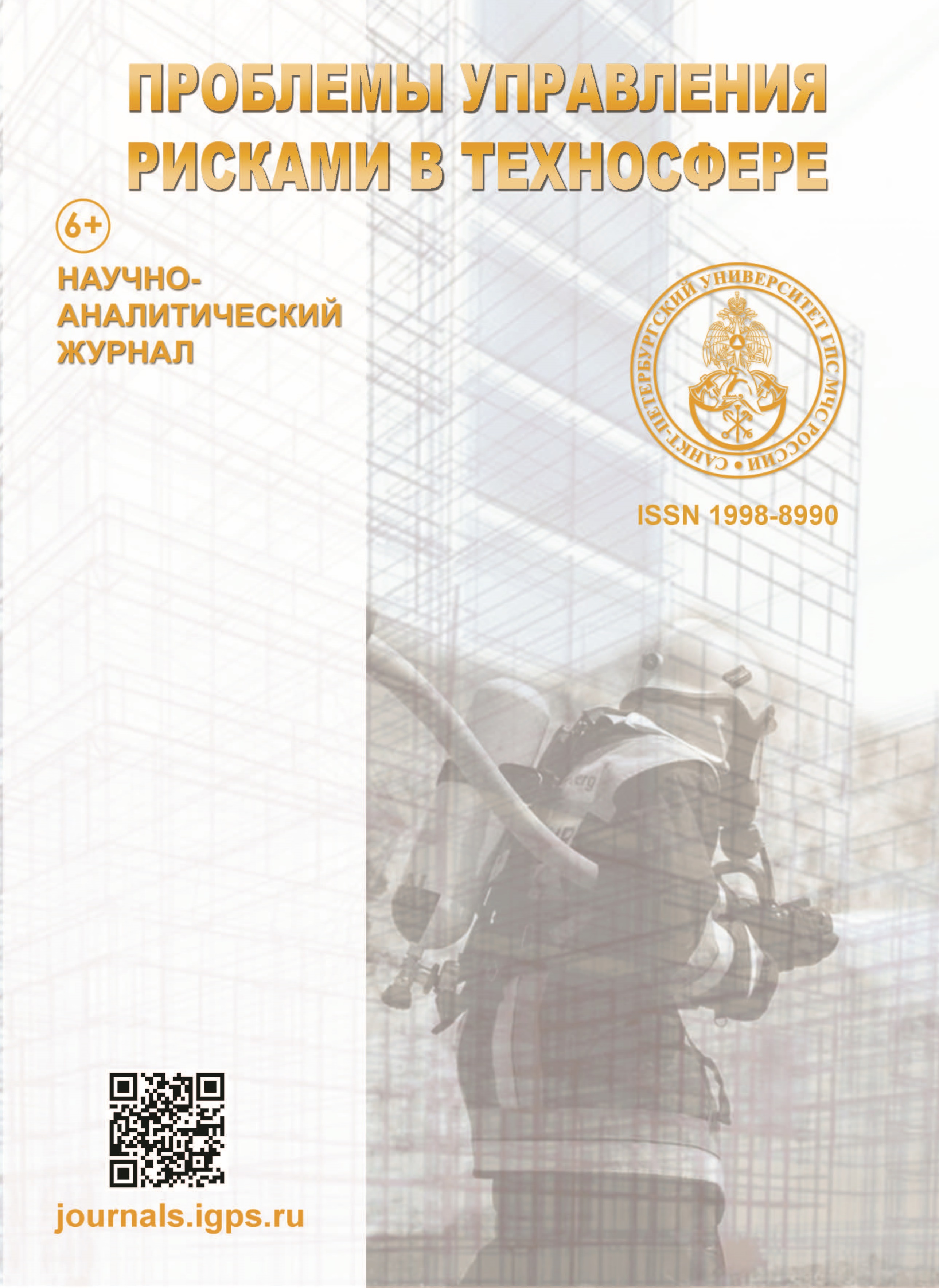Russian Federation
Russian Federation
Russian Federation
Russian Federation
Parachute-free landing is the most optimal way to deliver personnel and cargo to the place of emergency situations, as well as to evacuate people and cargo weighing up to 200 kg (the maximum weight for most launching devices) or up to 300 kg (the maximum weight of on-board winches) during helicopter hovering. Non-parachute landing requires less training of personnel (compared to parachute landing), does not require accurate calculations of ejection and control for landing at the right point, allows you to acquire most of the necessary skills by performing training descents from stationary objects of sufficient height (equipped towers, buildings, structures, etc.). The description and analysis of the characteristics and features of parachute-free landing equipment, which are possible for use by rescue units, given in the article, is intended to simplify the choice of the optimal variant of funds for acceptance for equipping units based on existing needs.
amphibious equipment, trigger kits, trigger devices, parachute-free landing
1. Sredstva besparashyutnogo desantirovaniya dlya dostavki sotrudnikov MCHS Rossii v usloviyah operativnogo reagirovaniya / M.V. Vishchekin [i dr.] // Aktual'nye voprosy pozharnoj bezopasnosti. 2023. № 4 (18). S. 25–33.
2. Sposoby i osobennosti desantirovaniya, vozdushno-desantnoe obespechenie v ekstremal'nyh usloviyah Arkticheskogo regiona / B.V. Satin [i dr.] // Original'nye issledovaniya. 2020. T. 10. № 1. S. 21–30.
3. Troutt J.E. Aviation Tools for Emergency Management and Homeland Security: Types, Functions, and the Future of Aviation for Emergency and Disaster Response // The Distributed Functions of Emergency Management and Homeland Security. CRC Press, 2023. S. 233–250.
4. Physiology of the wildland firefighter: managing extreme energy demands in hostile, smoky, mountainous environments / B.C. Ruby [et al.] // Comprehensive physiology. 2023. T. 13. № 2. S. 4587–4615.
5. Proposal of an Effective Way of Rescuing People from a Cable Car / M. Betuš [et al.] // Journal of Disaster Research. 2024. T. 19. № 5. S. 849–864.
6. Chisnall R. Rappel or Lower? A Brief Comparative Analysis of Techniques for Clearing Anchors and Descending from One-pitch Sport Climbs // Uluslararası Dağcılık ve Tırmanış Dergisi. 2023. T. 6. № 2. S. 69–84.
7. Greenway M.E., Grobler S.R. Safety of rope-guided conveyance systems // CIM Journal. 2024. T. 15. № 2. S. 86–104.
8. Abrahamsen E.B., Mattingsdal H., Abrahamsen H.B. Evaluation of the offset static rope evacuation procedure: insights from a safe job analysis // Scandinavian journal of trauma, resuscitation and emergency medicine. 2024. T. 32. № 1. S. 21.
9. The conservation impact of botanical drones: Documenting and collecting rare plants from vertical cliffs and other h ard‐to‐reach areas / B. Nyberg [et al.] // Ecological Solutions and Evidence. 2024. T. 5. № 1. S. 12318.
10. Matthews J., McKay S.D., Hertelendy A.J. Operational Rescue // Ciottone's Disaster Medicine. Elsevier, 2024. S. 568–572.
11. Chaporgin A.G. Rol' i mesto besparashyutnogo desantirovaniya v hode vypolneniya sluzhebno-boevyh zadach // NVI vojsk nacional'noj gvardii. 2022. S. 131.
12. Suvorov S.N. Metodika podgotovki sotrudnikov podrazdelenij OMON, SOBR FSVNG Rossii po besparashyutnomu desantirovaniyu s vertoleta // Podgotovka kadrov dlya silovyh struktur: Sovremennye napravleniya i obrazovatel'nye tekhnologii. 2017. S. 171–174.
13. Kashevnik B.L., Bajkovskij Yu.V. Avarijno-spasatel'noe snaryazhenie dlya rabot na vysote s ispol'zovaniem osnov i priemov tekhniki al'pinizma: ucheb.-metod. posobie. M.: Vertikal', 2008. 184 s.
14. Professiogramma voennosluzhashchih desantno-shturmovyh podrazdelenij VDV v hode sovremennoj boevoj podgotovki / D.V. Chernov [i dr.] // Aktual'nye problemy fizicheskoj i special'noj podgotovki silovyh struktur. 2021. № 1. S. 180–186.
15. Zelenov A.V., Vdovin A.V. Besparashyutnoe desantirovanie kak element transformacii podgotovki vojsk i komandnyh kadrov // Voennaya mysl'. 2022. № 8. S. 113–121.
16. Ustrojstvo dlya spuska po shnuru: pat. Ros. Federaciya RU 213900 U1 / Kochergin V.K.; patentoobladatel' OOO «ParAAvis»; zayavl. 22.12.2021; opubl. 04.10.2022.
17. Cristescu C.T. Troops Air Deployment – A Necessity For Mountain Forces // Romanian Military Thinking. 2024. № 2.
18. Bulatov V.O., Dumcheva M.M. Razvitie professional'nyh navykov primeneniya aviaspasatel'nyh tekhnologij sotrudnikami pozharno-spasatel'nyh formirovanij // Podgotovka kadrov v sisteme preduprezhdeniya i likvidacii posledstvij chrezvychajnyh situacij. 2018. S. 39–45.
19. Shenshin V.M. Arktika pod zashchitoj Rosgvardii // Pravo i gosudarstvo: teoriya i praktika. 2023. № 8 (224). S. 36–38.
20. Spasatel'nye obvyazki dlya kanatno-spusknyh ustrojstv / S.M. Dymov [i dr.] // Aktual'nye voprosy pozharnoj bezopasnosti. 2024. № 3 (21). S. 29–36.
21. Vybor kanatno-spusknyh pozharnyh ustrojstv dlya spasaniya lyudej s vysoty / V.I. Loginov [i dr.] // Pozharnaya bezopasnost'. 2019. № 3. S. 85–91.
22. Dynnik A.V., Vdovin A.V. Primenenie takticheskih vozdushnyh desantov v sovremennyh voennyh konfliktah: problemy i puti ih resheniya // Voennaya mysl'. 2023. № 5. S. 75–84.
23. Sovremennye vozdushno-desantnye tekhnologii dostavki special'noj tekhniki i material'nyh sredstv v spasatel'nyh operaciyah / S.G. Mingaliev [i dr.] // Tekhnologii grazhdanskoj bezopasnosti. 2020. № 4 (66). S. 58–64.
24. Korchagin A.S. Osobennosti organizacii aviacionnyh poiskovo-spasatel'nyh operacij v Rossii // Nauchnyj vestnik MGTU GA. 2013. № 190 (4).
25. Prater A.M. First Responders in Rescue-Based Work: A Phenomenological Case Study of Rural Rope and Rappel Rescue Workers. Ohio University, 2018.







